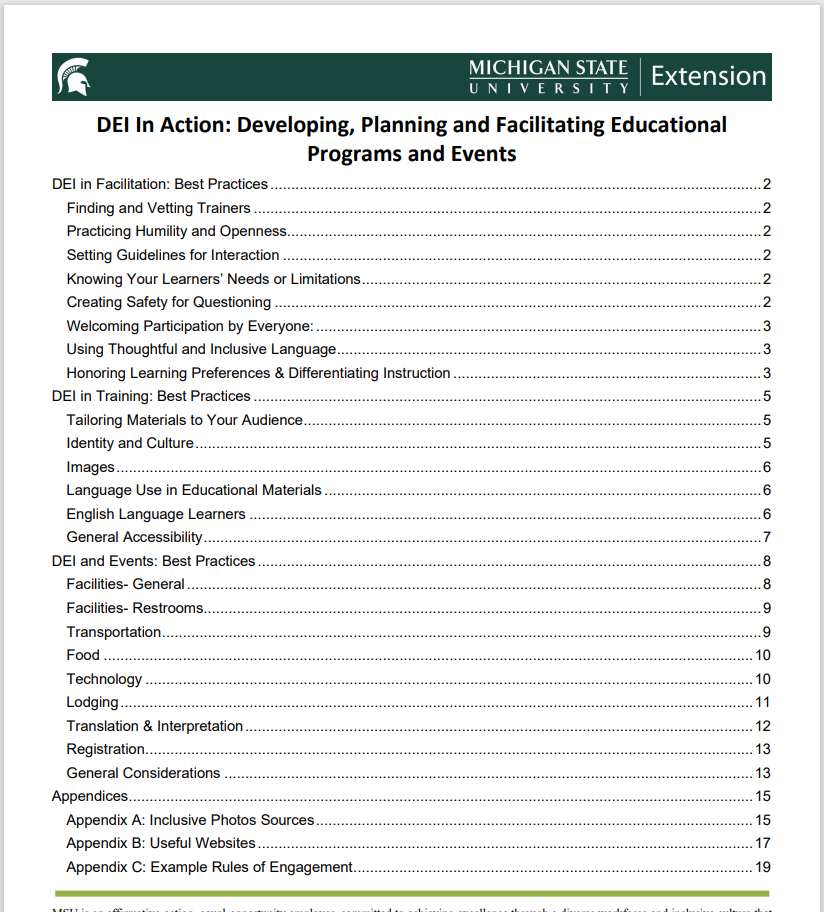Inclusivity and Trauma-Informed Training
Research indicates that learning is enhanced when the learners feel safe physically and psychologically. Employees and students come to training activities with complex histories including traumatic experiences from environmental tragedies, incarceration, medical treatments, race and gender discrimination, severe family dysfunction, substance abuse, violence, etc, as well as different limitations, strengths and preferences for how to receive new information.
Trainers can prepare intelligently and meet learners more effectively.
-
Prepare with research and personal development.
For instructor-led training, you can pave a path for handling stress constructively.
- Research how to be more inclusive including avoidance of microagressions.
- Research accessibility for the classroom and for online materials.
- Verify the space is accessible and encourage learners to ask for accommodations early or as a hurdle is identified and make accommodations whether changing seating, providing handout, increasing contrast of visuals, describing on-screen images, etc.
- Monitor your own well-being and take steps to improve your resilience and preparedness to help others.
- Explore tools to effectively handle intense learner behaviors, resources for identifying a mental health first aid situation, supporting a learner having a trauma reaction, handling disruptive participants, de-escalation techniques, active-listening skills.
-
Check for items that can shutdown or distract a learner.
Review online and classroom content and activities for items that can distract or shutdown a learner.
- Watch for and replace images and text references that are negative or insensitive to learners' gender, race, ethnicity, age, weight, or other conditions. Use a variety of pronouns for people in your stories or examples. Seek images that are supportive of a diverse range of physical characteristics.
- Consider whether your training (instructor-led or online on-demand) may contain any auditory or visual content (loud noise, text, image, animations, light changes) that could prompt an unexpected and intense physical or emotional reaction in a learner who has experienced a traumatic event or who has a medical condition.
- Enlist content reviewers and accessibility reviewers as appropriate to the delivery mode.
- Replace positive terms for any violent imagery: Be patient (versus Don't jump the gun); Be brave and try it (versus Take a shot at it, Take a stab at it, Pull the trigger); Someone is honest or forthright (versus A straight shooter); Someone is doing a great job (versus Killing it).
- Look and listen for any unnecessary hurdles to learning. Be open to feedback.
-
Arrive relaxed and monitor learners with compassion.
There can be a continuum of learner responses to activities depending on a person's temperament, an incident just before class, a series of past negative experiences, or a significant trauma event.
- Orient learners to the location of bathrooms and escape exits. Remind learners they can ask you if they are having trouble hearing or seeing content or if there is any other hurdle to their learning during an activity.
- Be aware of that loud sounds, unusual sounds, intense images, or sudden movements can impact you and your audience. If there is a noticeable reaction by one or more learners (or within yourself!), pause to acknowledge the impact either verbally ("Well, that was startling") or with a formal, obvious breath and encouraging eye contact or nod to transition. Give time for bodies and minds to reground, reset relax.
- Unintentional missteps by someone in the room including yourself may cause silence, arguing, crying, paralysis, etc. Show compassion and patience, but do be firm with ground rules for respecting others. "Spartan, in this class, we don't call each other names."
- Seek help if someone becomes threatening to other students. You can also comment as you feel comfortable, "Let me talk to you more about this. Please follow me to a separate room." Or "Please let me give you my phone number so we can talk about this as soon as we are finished here." Or "This sounds important and will take time to sort out. Class is dismissed. Sally can you let the office know that I'm staying behind with this student?"
Development Resources
Creating and delivering training that is more accessible and effective for everyone takes effort and time. Be responsive to feedback and continue to seek information during the journey. Here are some resources from MSU to assist you.
Be ready to flex the mode for instruction and assessment. Skills and knowledge can be transferred in multiple ways. If need arises, check with the Ability system support team to discuss alternatives to delivering training that will meet workplace competencies while also assisting an individual's needs, including barriers to reading level, language, etc.
- http://webaccess.msu.edu/ and/or do a web search for universal design for learning
- https://hr.msu.edu/ua/professional-development/TI%20Supervision.html
- https://inclusion.msu.edu/education/index.html
- https://www.rcpd.msu.edu/ for learners to investigate whether an accommodation is appropriate.
See also this comprehensive guide from MSU Extension: https://www.canr.msu.edu/od/uploads/files/DEI-in-Action(PDF)


